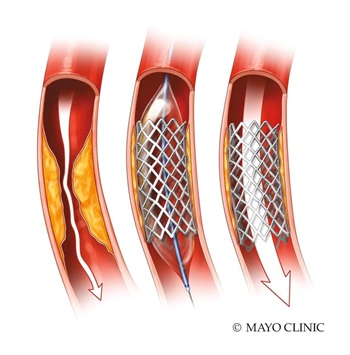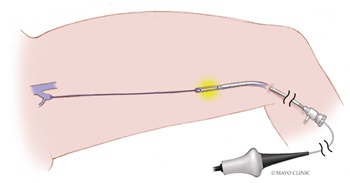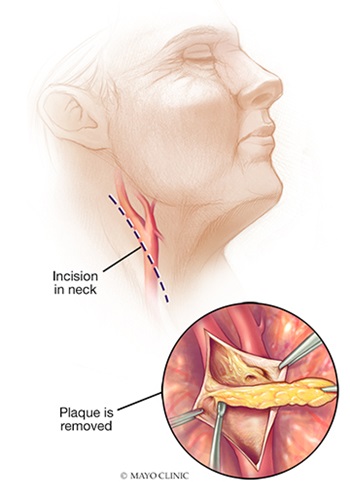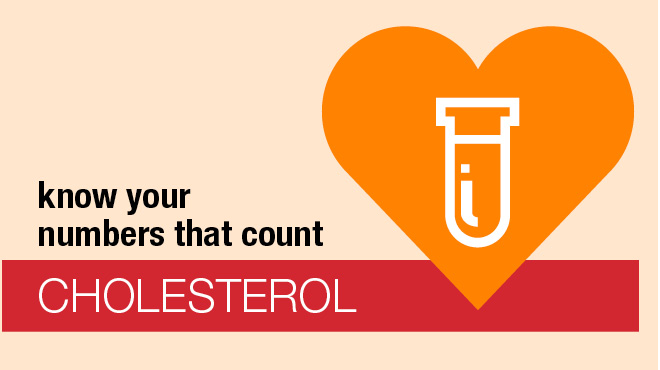
Vascular Medicine & Surgery
Recent Posts
Vascular Treatments in Eau Claire
Our vascular team is committed to bringing you the latest advancements and surgical procedures to help you remain close to home and family. If a surgical procedure is needed, we specialize in minimally invasive procedures to give you a quicker, less painful recovery.
Learn more about treatment options:
- Balloon angioplasty and stenting
- Endovenous laser therapy
- Radiofrequency ablation
- Carotid endarterectomy
- Aortic aneurysm repair
- Vascular bypass surgery
Vascular nonsurgical treatments
Balloon angioplasty and stenting
A balloon angioplasty is a minimally invasive procedure that uses a thin, flexible catheter to guide a small, deflated balloon to the site of the narrowed or blocked artery. The balloon is then inflated, pressing the plaque against the wall of the artery to help and restore blood flow. Often a small, mesh tube, called a stent, is then placed to keep the artery open.

Endovenous laser therapy
Endovenous laser therapy (ELT) is a minimally invasive procedure used to treat varicose veins. During the procedure, a thin laser fiber is inserted into the effected vein and a precise and controlled amount of energy is emitted, which heads and seals the vein. The laser energy causes the vein to collapse and shrink, redirecting blood flow to healthier veins nearby.

Radiofrequency ablation
Radiofrequency ablation is a procedure similar to EVT for treating varicose veins. During the procedure, a thick catheter is inserted into the affected vein. The catheter contains a radiofrequency electrode at its tip. The electrode generates and emits radiofrequency energy, which heats the vein wall and causes it to shrink and close, redirecting blood flow to healthier veins nearby.
Vascular surgical procedures
Carotid endarterectomy
A carotid endarterectomy is performed when plaque builds up in one of the carotid arteries, the arteries that deliver blood to the brain. During the procedure, a surgeon opens the carotid artery and removes the plaque. The artery is then stitched or patched with a vein or artificial material.

Aortic aneurysm repair
Surgery is generally recommended for larger aneurysms or if it's growing quickly or presenting symptoms. The type of surgery performed depends on the size and location of the aneurysm, age and overall health.
Abdominal aortic aneurysm surgery options may include:
- Endovascular repair
this procedure is used most often to repair an abdominal aortic aneurysm. Our cardiovascular surgeons insert a thin, flexible tube (catheter) through an artery in the leg and gently guide it to the aorta. A metal mesh tube (graft) on the end of the catheter is placed at the site of the aneurysm, expanded, and fastened in place. The graft strengthens the weakened section of the aorta to prevent rupture of the aneurysm. Benefits to performing an endovascular repair include faster recovery times, less pain, and less risk for developing complications post-surgery. However, endovascular surgery isn't an option for everyone with an abdominal aortic aneurysm. You and your doctor will discuss the best repair option for you. After endovascular surgery, you'll need regular imaging tests to ensure that the grafted area isn't leaking. - Open abdominal surgery
this procedure involves removing the damaged part of the aorta and replacing it with a graft, which is sewn into place. Full recovery may take a month or more.
Vascular bypass surgery
A vascular bypass procedure reroutes blood flow around a blocked artery segment using a graft. A graft may be a vein from one's own body or a synthetic material. Vascular bypass is often for people with severe blockages in the arteries to lower parts of the body.


